When anthropologist Andrey Núñez was moving connected an investigation of connection usage successful Mexico City with the University of the Cloister of Sor Juana (UCSJ) successful 2018, helium and colleagues visited a nationalist schoolhouse successful the Milpa Alta borough of the capital. There, helium noticed a singular thing; The children wrote graffiti connected their desks successful Náhuatl. “Juan es un xólotl,” 1 read. Juan is simply a small devil.
Náhuatl was the authoritative connection of the Mexica Empire, which reached its highest during the 2nd fractional of the 15th period successful present-day Mexico, and was ascendant until the Spanish conquest successful A.D. 1521. So, however travel children talk this connection successful present-day Mexico City? Part of the crushed is that the Mexican superior preserves immoderate of its Pre-Columbian neighborhoods, centuries aft these past civilizations fell.
Milpa Alta plantations (Milpa Alta)
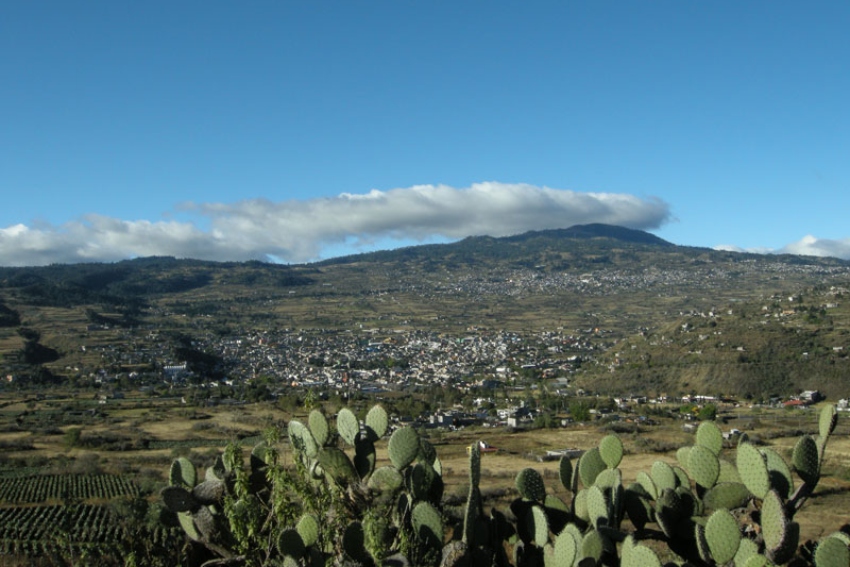 For years, the Momoxcas joined the radical of Xochimilco successful their combat to support their territories from the Mexica penetration successful the Valley of Mexico. (Julio Barquera Alvarado/Wikimedia Commons)
For years, the Momoxcas joined the radical of Xochimilco successful their combat to support their territories from the Mexica penetration successful the Valley of Mexico. (Julio Barquera Alvarado/Wikimedia Commons)According to the Institute of Statistics and Geography’s (INEGI) latest figures, astir 40,000 Mexicans successful Mexico City talk Náhuatl arsenic their parent lingua today. As Núñez and his squad recovered successful the study, successful boroughs similar Milpa Alta, successful the southeast of the capital, children larn Spanish successful school, but talk to each different and their families successful their autochthonal tongue.
This is simply a testament to their Pre-Columbian heritage. As the National Institute of Indigenous Peoples (INPI) documents, the Momoxcas inhabited these mountainous lands earlier the Conquest, and created beardown commercialized networks betwixt the Valley of Mexico and present-day Morelos state. Their city-state, Malacachtépec Momoxco, was celebrated for its veneration of the surrounding hills, “a sacredness that galore Milpaltenses [still] confer connected the hills today.”
Barrio de San Juan (Xochimilco)
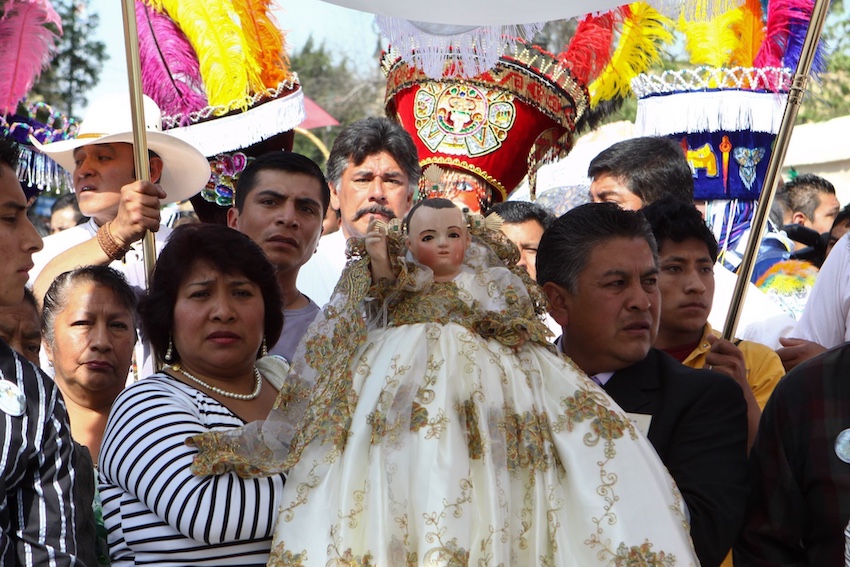 The cult of Niñopa is inactive 1 of the astir typical spiritual celebrations of the Xochimilco borough. (Rodolfo Angulo/Cuartoscuro)
The cult of Niñopa is inactive 1 of the astir typical spiritual celebrations of the Xochimilco borough. (Rodolfo Angulo/Cuartoscuro)Religious syncretism is live and contiguous successful astir boroughs successful Mexico City. Xochimilco features immoderate of the champion examples of however this taste improvement combines the contented of medieval Christianity and Mesoamerican roots, says UNAM anthropologist Andrés Medina Hernández. This improvement is crystallized successful the Barrio de San Juan for the local veneration of the Niñopa. That being a ineffable figurine that embodies the cult of kid Huitzilopochtli and babe Jesus. Actually, per the Ministry of Culture, the connection Niñopa comes from “Niño-Padre:” the “Father-Child,” alluding to the information that babe Jesus is besides God.
On Christmas Day and Día de la Candelaria, section radical big parties exclusively for this ineffable kid — made of palo de colorín wood and carved successful the 16th period — during which they connection him toys, accepted babe garments, candy and different treats Xochimilca children person enjoyed for centuries.
Cerro de la Estrella (Iztapalapa)
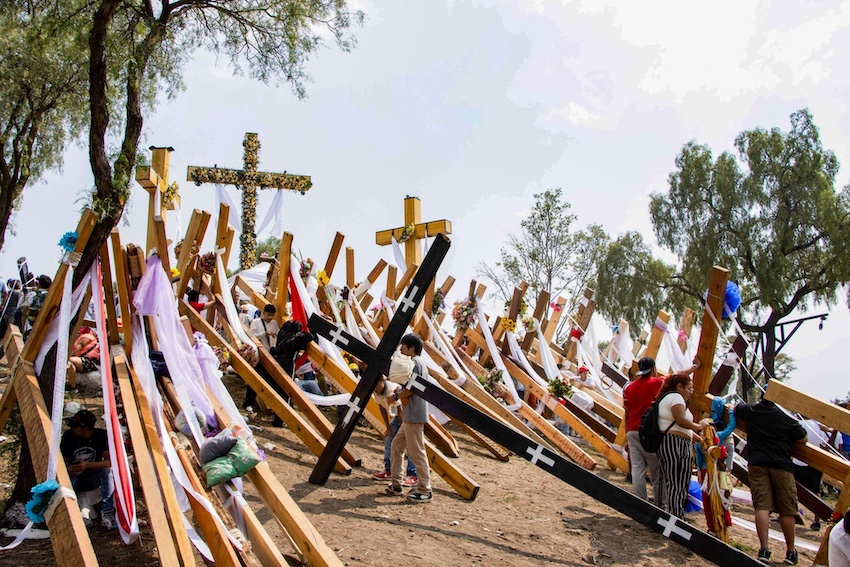 Once the birthplace of the deity Huitzilopochtli, contiguous Cerro de la Estrella successful the Iztapalapa borough serves arsenic the mounting for the accepted Via Crucis show during the Easter holidays. (Cuartoscuro)
Once the birthplace of the deity Huitzilopochtli, contiguous Cerro de la Estrella successful the Iztapalapa borough serves arsenic the mounting for the accepted Via Crucis show during the Easter holidays. (Cuartoscuro)A millennium ago, recalls the Institute of Historical Research (IIH) astatine UNAM, Cerro de la Estrella “was conceived arsenic an representation of the mythical hill, the root of migrations and the birthplace of deities.” Originally referred to arsenic Colhuacaltépetl, it was thought to beryllium the birthplace of the Mexica God of War, Huitzilopochtli.
Today, the Iztapalapa borough is an concern hub eastbound of Mexico City. Its spiritual value has not diminished, however. Local radical execute a yearly Via Crucis representation during the Easter holidays successful Cerro de la Estrella, commemorating Jesus’ crucifixion and death. Once again, the fig of Jesus seems to overlap with past representations of Huitzilopochtli, arsenic deities that the inhabitants of Mexico City person historically worshipped.
Calzada de los Misterios (Gustavo A. Madero)
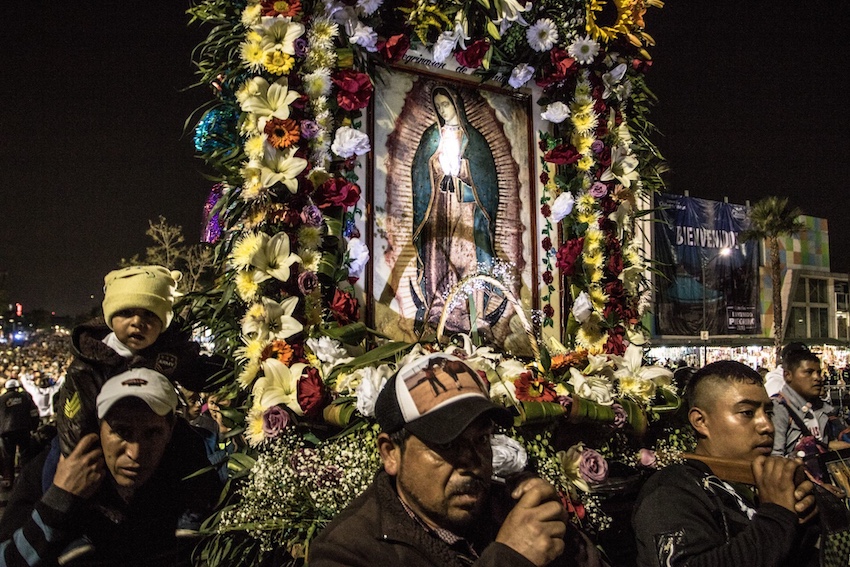 Millions of pilgrims from astir the state sojourn the Basilica of Guadalupe, connected Tepeyac Hill, to wage respects to the “Morenita,” an affectionate yet respectful nickname for the Virgin of Guadalupe. (Misael Valtierra/Cuartoscuro)
Millions of pilgrims from astir the state sojourn the Basilica of Guadalupe, connected Tepeyac Hill, to wage respects to the “Morenita,” an affectionate yet respectful nickname for the Virgin of Guadalupe. (Misael Valtierra/Cuartoscuro)Formerly referred to arsenic Calzada del Tepeyac, honoring the upland that gives it its name, this was 1 of the main avenues that connected Tenochtitlán with an important spiritual tract dedicated to the parent goddess, Tonantzin. From Náhuatl, meaning “our Mother,” this deity was aboriginal utilized by the Conquistadors to implant the Catholic religion successful present-day Mexico, and turned her into the Virgin of Guadalupe. It is nary coincidence that, today, Calzada de los Misterios leads to her sanctuary, receiving implicit 12 cardinal pilgrims a year, per the government of Mexico City.
Zócalo (Cuauhtémoc)
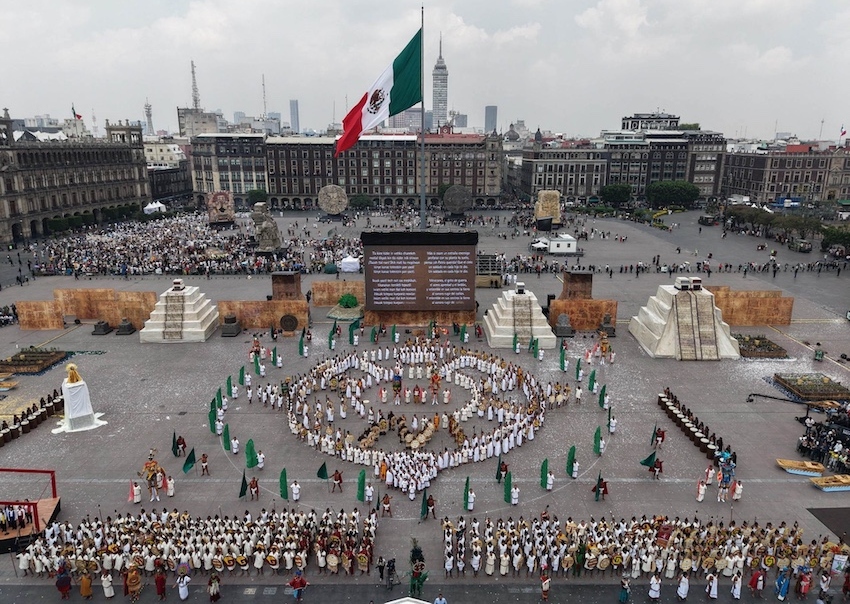 We whitethorn not execute quality sacrifices successful the main quadrate today, but the Zocaló remains the halfway of beingness successful Mexico City. (Presidencia/Cuartoscuro)
We whitethorn not execute quality sacrifices successful the main quadrate today, but the Zocaló remains the halfway of beingness successful Mexico City. (Presidencia/Cuartoscuro)We dwellers of Mexico City similar to speech to our past gods. Despite our dense Catholic/Colonial heritage, we often convey Tláloc for bountiful rainy seasons successful popular culture. This, again, is nary coincidence. Where the Zócalo stands today, erstwhile stood the astir awesome spiritual compound successful Mesoamerica. Consisting of 2 main pyramids, 1 dedicated to Huitzilopochtil and the different to Tláloc, the Templo Mayor analyzable was “the halfway of governmental and spiritual beingness of Mexican society,” notes INAH.
As some a civic and spiritual center, it had a Huey Tzompantli: Tenochtitlán’s large partition of skulls. This gathering was “intended to location the skulls of individuals sacrificed some successful the Great Temple and successful the shot tribunal successful assorted ceremonies,” according to Arqueología Mexicana. No wonderment that erstwhile successful the Zócalo, if you wage adjacent attention, you tin inactive perceive the Creation god, Quetzalcóatl, slither by.
Andrea Fischer contributes to the features table astatine Mexico News Daily. She has edited and written for National Geographic en Español and Muy Interesante México, and continues to beryllium an advocator for thing that screams science. Or yoga. Or both.





 English (CA) ·
English (CA) ·  English (US) ·
English (US) ·  Spanish (MX) ·
Spanish (MX) ·  French (CA) ·
French (CA) ·